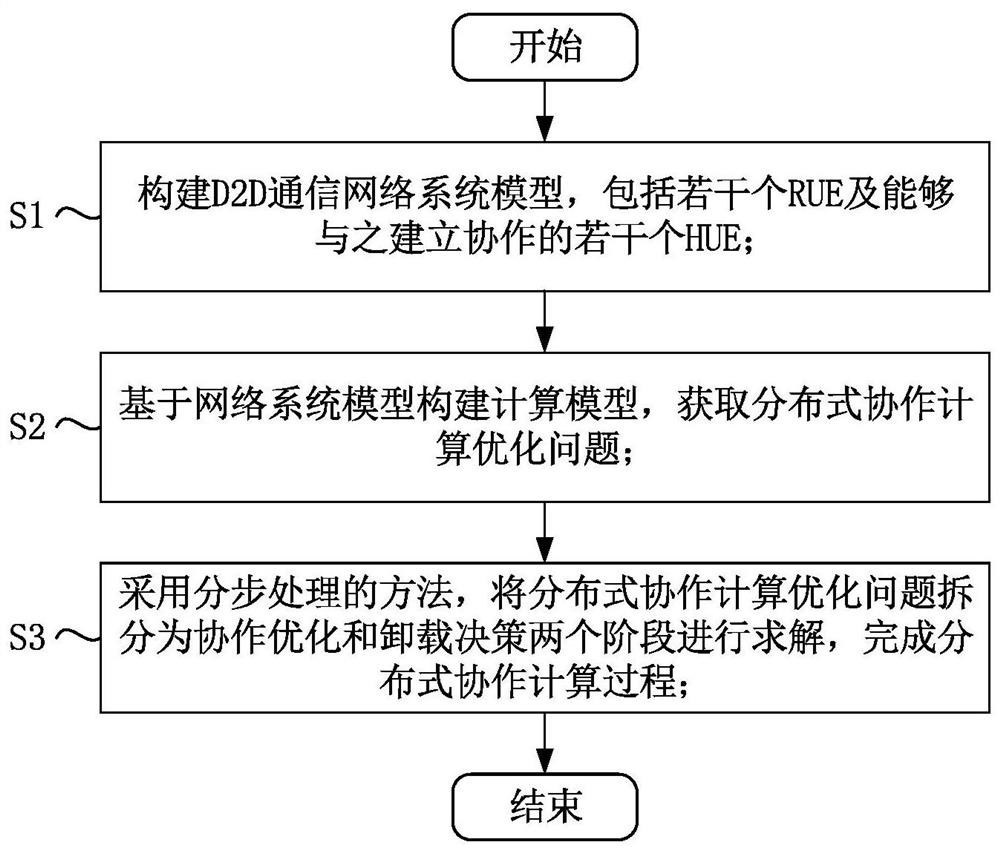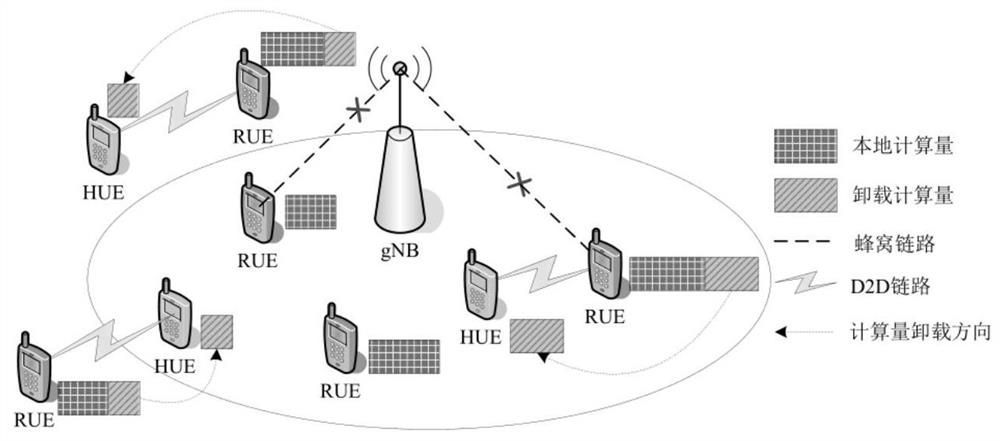D2D distributed cooperative computing method for minimizing system computing energy consumption
A technology of distributed collaboration and computing methods, applied in the direction of reducing energy consumption, machine-to-machine/machine-type communication services, advanced technology, etc., to achieve the effect of saving system computing energy consumption, solving the shortage of user computing resources, and increasing the number of tasks
- Summary
- Abstract
- Description
- Claims
- Application Information
AI Technical Summary
Problems solved by technology
Method used
Image
Examples
Embodiment 1
[0029] Such as figure 1 As shown, a D2D distributed collaborative computing method that minimizes system computing energy consumption includes the following steps:
[0030] S1: Build a D2D communication network system model, including several RUEs and several HUEs that can establish cooperation with them;
[0031] S2: Construct a computing model based on the network system model to obtain distributed collaborative computing optimization problems;
[0032] S3: Using the method of step-by-step processing, the distributed collaborative computing optimization problem is divided into two stages of collaborative optimization and unloading decision-making to solve, and the distributed collaborative computing process is completed;
[0033] Wherein: in the cooperative optimization stage, for each possible RUE-HUE cooperative D2D user pair, solve the problem of offloading calculation optimization and offloading transmission power optimization, and form a set of candidate HUEs for each ...
Embodiment 2
[0138] In order to more fully illustrate the beneficial effects of the present invention, the effectiveness and advancement of the present invention will be further described below in conjunction with specific embodiments and related simulation results and analysis.
[0139] Some typical parameter values are selected for system simulation, as shown in Table 3. Unless otherwise specified, all the simulation results below adopt the parameters in Table 3.
[0140] Table 3: System simulation parameter settings
[0141] parameter parameter value Number of RUE users, R [2, 16] Number of HUE users, H [2, 16] Path loss factor, α 3.68 Channel bandwidth, B 180kHz Task Processing Density, C 500 CPU clock cycles / bit Energy consumption coefficient, ε 1e-26 RUE r computing power, f r
[0142] Without loss of generality, this scheme assumes that the HUE and RUE in the system are randomly and uniformly distributed in a square area w...
comparative approach 1
[0143] Comparison scheme 1: Offloading Decision Optimization based Distributed D2D Cooperative Computation (ODO-DD2D-CC) scheme. This solution, that is, the ECM-DD2D-CC solution proposed by the present invention does not consider the simplified solution of offload transmission power optimization, but only considers the offload decision of the RUE user and the optimization of the offload calculation amount.
PUM
 Login to View More
Login to View More Abstract
Description
Claims
Application Information
 Login to View More
Login to View More - R&D Engineer
- R&D Manager
- IP Professional
- Industry Leading Data Capabilities
- Powerful AI technology
- Patent DNA Extraction
Browse by: Latest US Patents, China's latest patents, Technical Efficacy Thesaurus, Application Domain, Technology Topic, Popular Technical Reports.
© 2024 PatSnap. All rights reserved.Legal|Privacy policy|Modern Slavery Act Transparency Statement|Sitemap|About US| Contact US: help@patsnap.com










